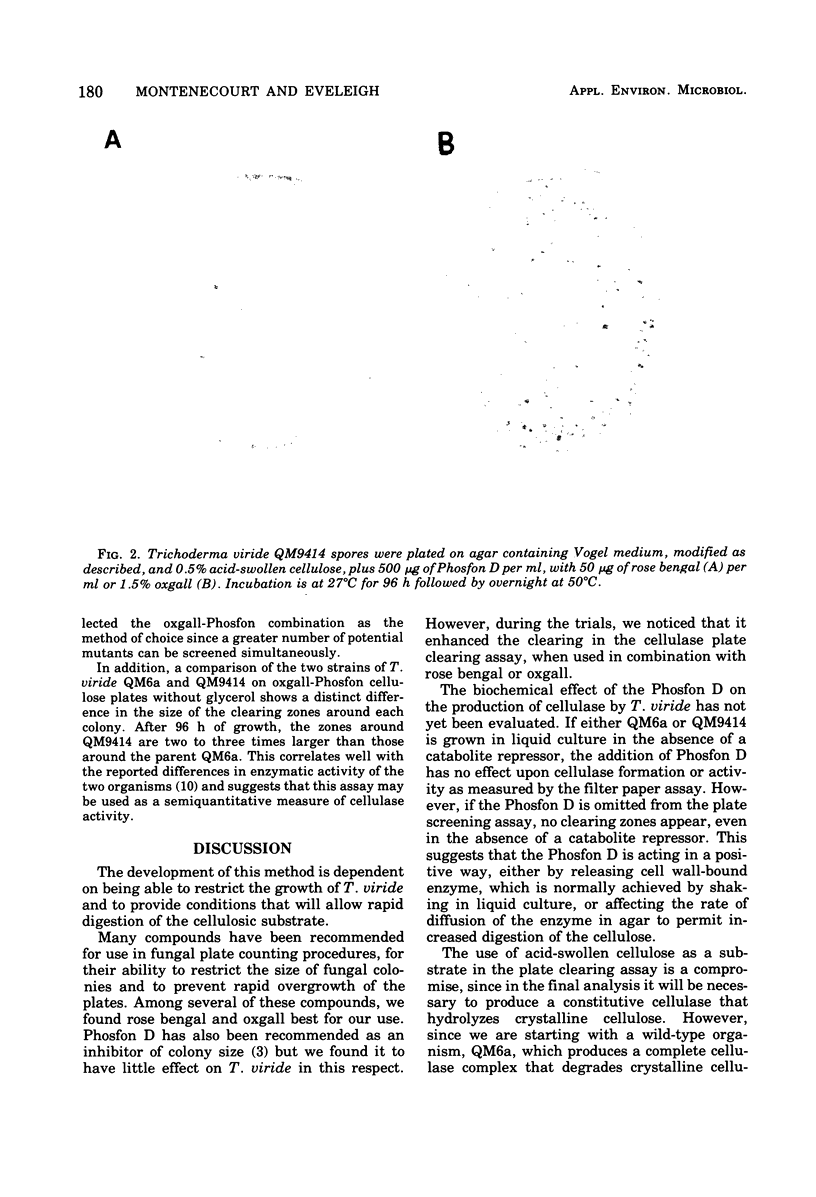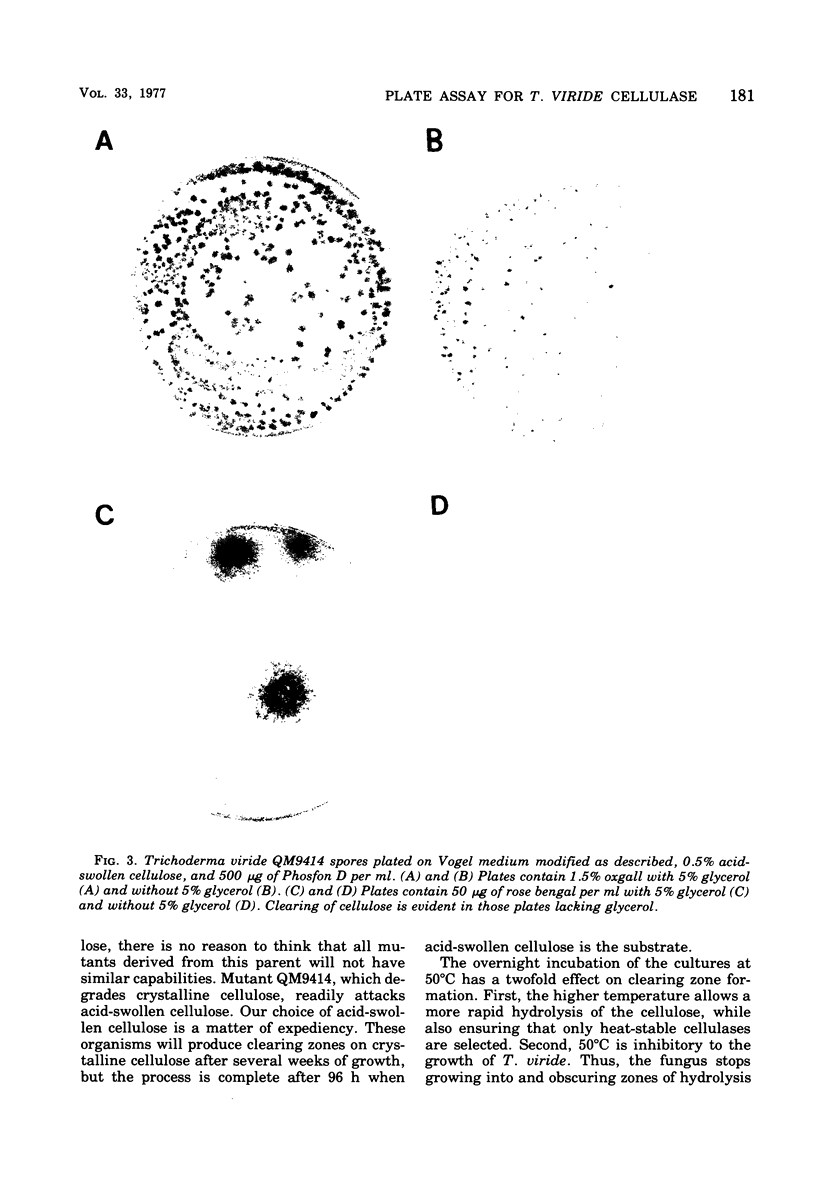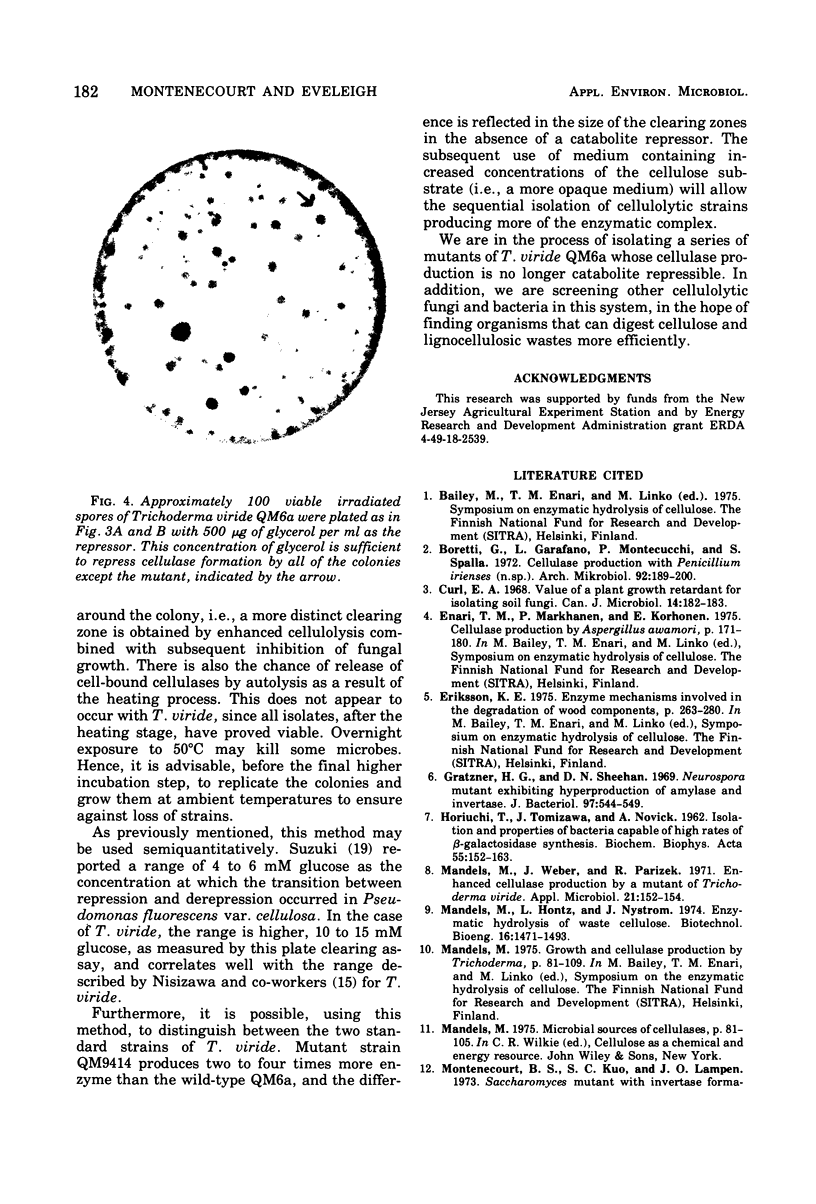Abstract
A plate clearing assay was devised to screen for high-producing cellulase mutants of Trichoderma viride. The method employs (i) the use of either rose bengal or oxgall to limit colony size and (ii) Phosfon D (tributyl-2, 4-dichloroben-zylphosphonium chloride) to enhance cellulase detection, in combination with acid-swollen cellulose on agar plates. The method was used to isolate constitutive cellulase mutants of T. viride and should prove useful for isolating high-producing mutants from a range of organisms. This technique has been also used to determine the concentration at which glucose and glycerol inhibit cellulase synthesis by catabolite repression in the wild-type strains.
Full text
PDF





Images in this article
Selected References
These references are in PubMed. This may not be the complete list of references from this article.
- Boretti G., Garofano L., Montecucchi P., Spalla C. Cellulase production with Penicillium iriense (n.sp.). Arch Mikrobiol. 1973 Aug 21;92(3):189–200. doi: 10.1007/BF00411199. [DOI] [PubMed] [Google Scholar]
- Curl E. A. Value of a plant growth retardant for isolating soil fungi. Can J Microbiol. 1968 Feb;14(2):182–183. doi: 10.1139/m68-030. [DOI] [PubMed] [Google Scholar]
- Gratzner H., Sheehan D. N. Neurospora mutant exhibiting hyperproduction of amylase and invertase. J Bacteriol. 1969 Feb;97(2):544–549. doi: 10.1128/jb.97.2.544-549.1969. [DOI] [PMC free article] [PubMed] [Google Scholar]
- HORIUCHI T., TOMIZAWA J. I., NOVICK A. Isolation and properties of bacteria capable of high rates of beta-galactosidase synthesis. Biochim Biophys Acta. 1962 Jan 22;55:152–163. doi: 10.1016/0006-3002(62)90941-1. [DOI] [PubMed] [Google Scholar]
- Mandels M., Weber J., Parizek R. Enhanced cellulase production by a mutant of Trichoderma viride. Appl Microbiol. 1971 Jan;21(1):152–154. doi: 10.1128/am.21.1.152-154.1971. [DOI] [PMC free article] [PubMed] [Google Scholar]
- Montenecourt B. S., Kuo S. C., Lampen J. O. Saccharomyces mutants with invertase formation resistant to repression by hexoses. J Bacteriol. 1973 Apr;114(1):233–238. doi: 10.1128/jb.114.1.233-238.1973. [DOI] [PMC free article] [PubMed] [Google Scholar]
- Nisizawa T., Suzuki H., Nisizawa K. Catabolite repression of cellulase formation in Trichoderma viride. J Biochem. 1972 Jun;71(6):999–1007. doi: 10.1093/oxfordjournals.jbchem.a129872. [DOI] [PubMed] [Google Scholar]
- Ottow J. C. Rose bengal as a selective aid in the isolation of fungi and actinomycetes from natural sources. Mycologia. 1972 Mar-Apr;64(2):304–315. [PubMed] [Google Scholar]
- Rautela G. S., Cowling E. B. Simple cultural test for relative cellulolytic activity of fungi. Appl Microbiol. 1966 Nov;14(6):892–898. doi: 10.1128/am.14.6.892-898.1966. [DOI] [PMC free article] [PubMed] [Google Scholar]






